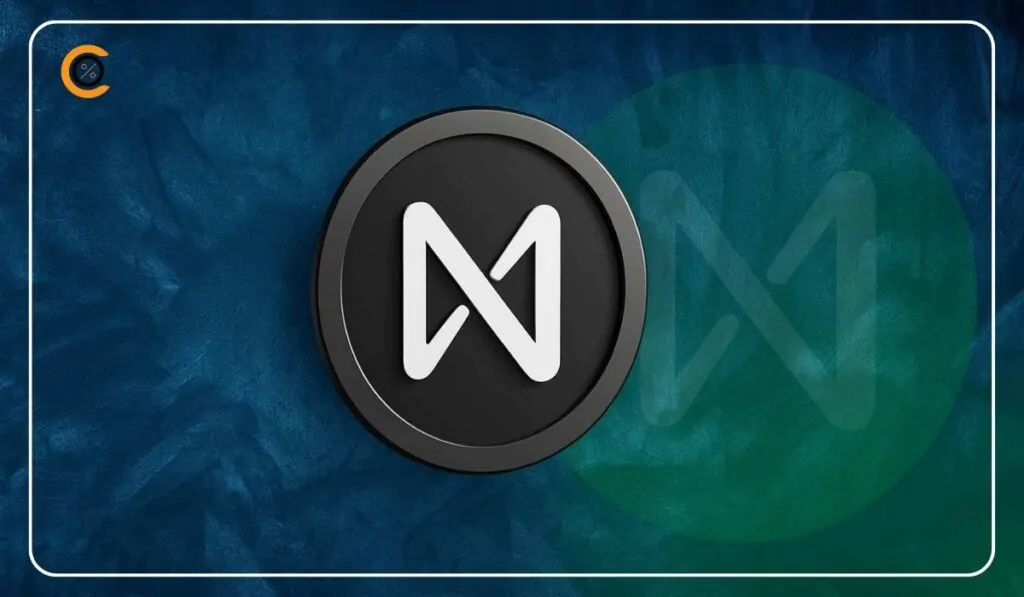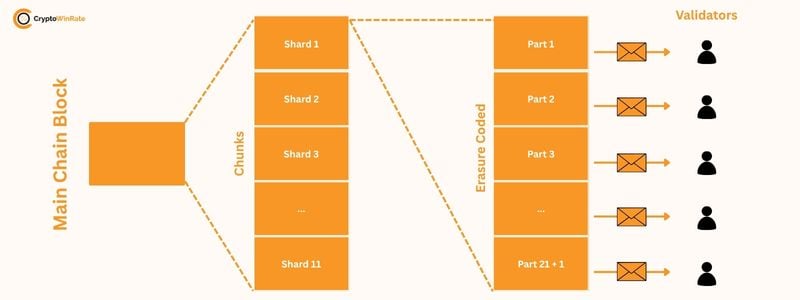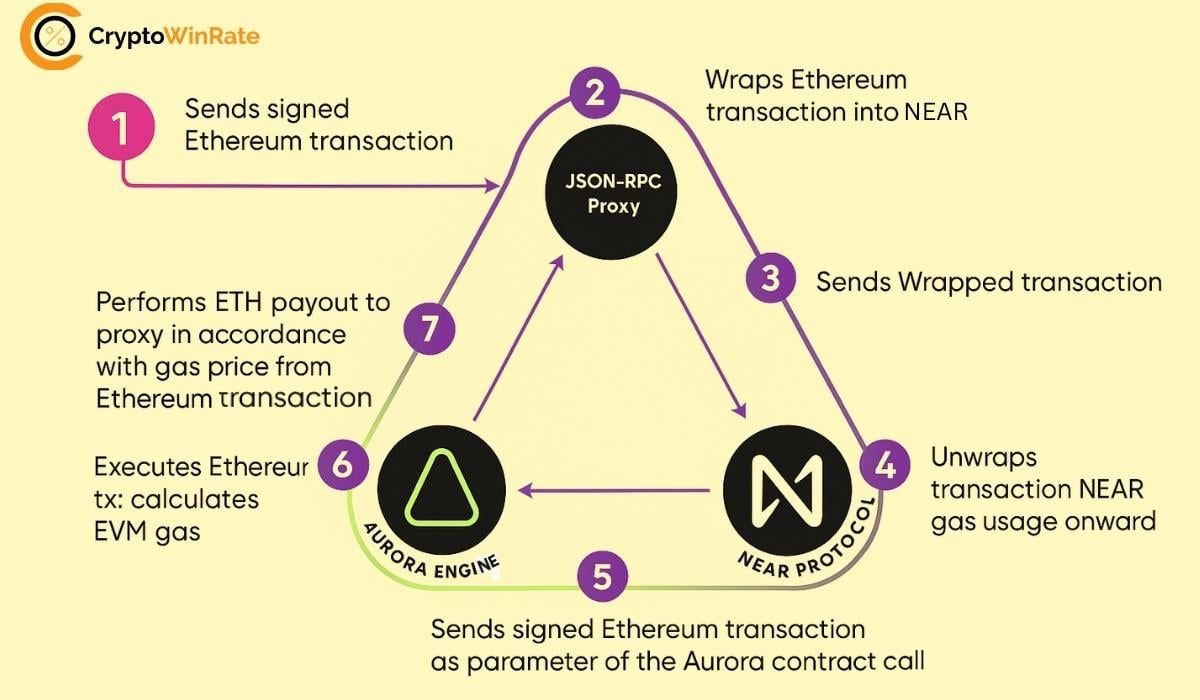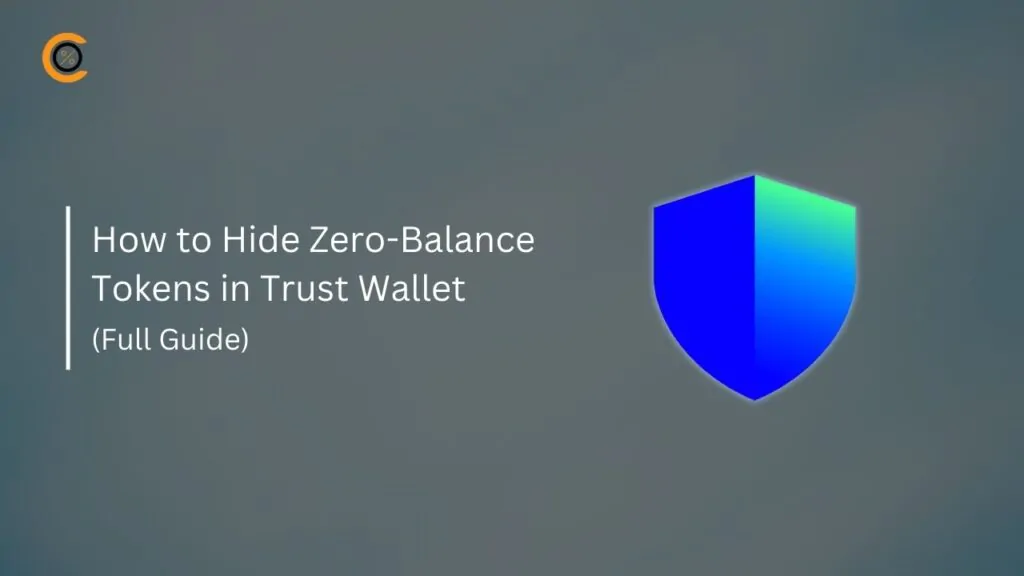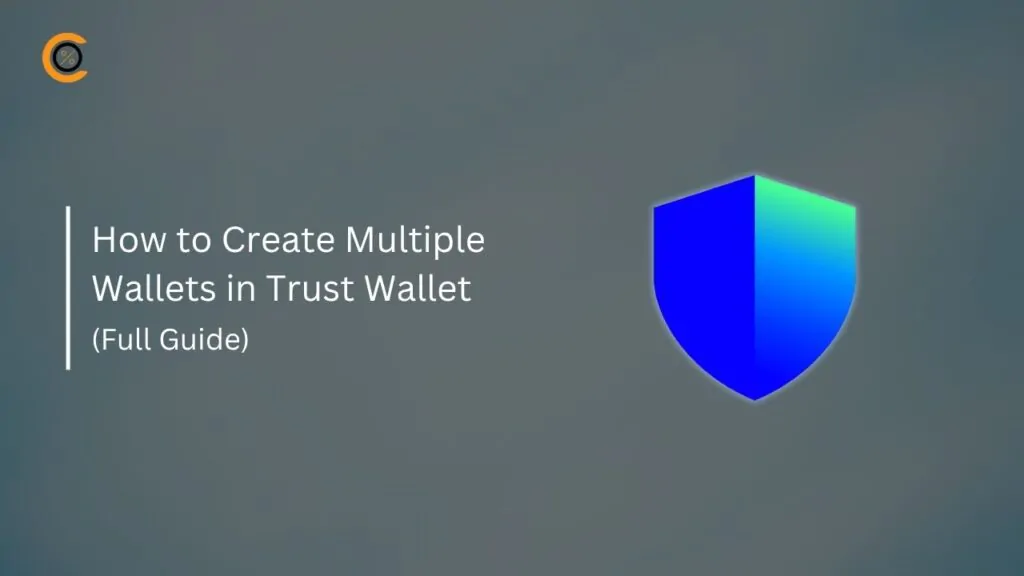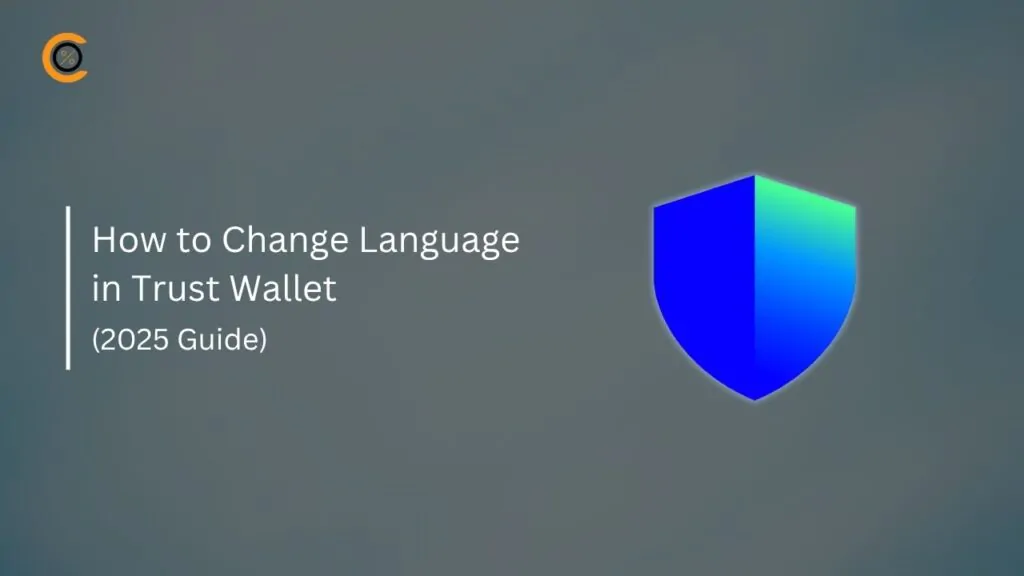- NEAR Protocol wasn’t just adapted for AI, it was born from it. Its foundation in machine learning gives it a natural edge in enabling on-chain AI agents and tools like NEAR Intents and Chain Signatures.
- With Nightshade sharding and sub-2 second finality, NEAR offers low fees and high throughput. Features like human-readable wallets and meta-transactions make onboarding smooth for everyday users.
- Through Aurora and the Rainbow Bridge, NEAR supports Ethereum compatibility and cross-chain asset movement. It’s also expanding to ecosystems like Solana and Cosmos, aiming to be the backbone of interoperable, intelligent apps.
In the middle of all the noise around faster chains and cheaper transactions, a project called NEAR Protocol is quietly building its own story. With AI becoming the new obsession across the crypto space, NEAR is starting to draw attention for reasons that go beyond just speed or fees. You might’ve come across it while reading about AI in crypto or just stumbled on it while looking into next-gen blockchains. Either way, the timing couldn’t be better to ask: what is NEAR Protocol, and why are so many developers now starting to build with it?
What Is NEAR Protocol?
NEAR Protocol is a public Layer-1 blockchain designed to run decentralized applications at scale. It runs on a Proof-of-Stake model and supports smart contracts much like Ethereum, but with added performance and flexibility. The mainnet launched in 2020, but its foundation goes back to 2017 when it started as an AI research project called NEAR.ai. Its founders, Illia Polosukhin and Alexander Skidanov, originally focused on machine learning before shifting to blockchain development. That history is still reflected in how NEAR is approaching the current wave of AI in crypto.
Instead of being a fork or derivative of something else, NEAR was built with its own architecture and problem set in mind. It aimed to solve the scaling and cost limitations seen in older chains. The idea was simple: make a chain that developers can build on easily, where apps feel intuitive for users, and where new technologies like artificial intelligence could be layered on without hitting a wall.
How NEAR Protocol Works: The Core Architecture
At the center of NEAR’s performance is a system called Nightshade. It’s a type of sharding that allows the chain to split into smaller, manageable parts that run in parallel. This setup keeps things from getting clogged, so NEAR can handle tens of thousands of transactions per second without slowing down. It also reduces transaction fees to less than a cent in most cases.
The consensus model uses Proof-of-Stake, where validators are selected to produce blocks and confirm network activity based on how many tokens they hold and stake. What’s interesting here is that NEAR uses something called a “seat price” to decide who gets to validate. The higher the demand, the higher the seat price. This helps keep things competitive and decentralized.
Transactions finalize quickly, usually within 1 to 2 seconds, making it usable for real-world apps that need speed. The entire setup was designed not just for speed but for long-term scalability, meaning it can adjust based on the number of users or apps running at any given time.
Interoperability: How NEAR Plays Well with Others
One of the reasons developers are gravitating toward NEAR is because it doesn’t try to lock them into one ecosystem. It’s compatible with Ethereum thanks to Aurora, a virtual machine that lets Ethereum-based apps run on NEAR without needing to rewrite smart contracts. This saves developers time and opens the door to cheaper execution.
The Rainbow Bridge is another feature that connects Ethereum and NEAR. It allows users to transfer assets between the two chains using a trustless method. This connection supports most ERC-20 tokens and even wrapped assets like WETH and WBTC. It’s less about flashy features and more about building practical solutions that help dApps actually work across chains.
Beyond Ethereum, NEAR is also expanding its network to work with Solana, Polkadot, and Cosmos. This multi-chain outlook isn’t just for convenience, it reflects NEAR’s larger goal of becoming an infrastructure that can quietly support many different types of decentralized systems.
NEAR and AI: A Blockchain Built by AI Pioneers
Unlike other blockchains jumping on the AI trend, NEAR didn’t have to pivot, it’s actually returning to its original direction. Illia Polosukhin, one of the co-founders, worked at Google on natural language models and co-authored the paper that led to the transformer architecture. That experience is now showing up in how NEAR integrates AI.
NEAR is pushing for what it calls the “agent economy”. That means building AI agents that can carry out tasks on-chain, interact with other agents, and handle user requests, all without central servers. Tools like NEAR Intents are already laying the foundation. With these, users don’t have to execute every step themselves. They can simply express what they want, and an agent figures out the most efficient way to do it.
NEAR is also working on Chain Signatures, allowing one account to sign transactions across multiple chains. So a single NEAR-based AI agent could operate across Ethereum, Solana, and others, without wrapping or bridging in the traditional sense.
The protocol has even launched NEAR Tasks, a gig-style platform where users complete microtasks that contribute to AI model training. It’s a rare example where on-chain activity directly supports off-chain AI development, and rewards users while doing so.
User Experience: Why NEAR Feels Different
One thing people notice early on with NEAR is how user-friendly it is. Wallets can be created with simple usernames like alex.near rather than long, unreadable addresses. There’s also no need for users to hold NEAR tokens upfront thanks to meta-transactions. dApps can pay fees on their behalf, which makes the onboarding process much smoother.
Then there’s BOS, the Blockchain Operating System. It lets developers build front-ends that are composable, meaning one app’s interface can interact with another’s directly. This brings a Web2-style experience to Web3 applications, without requiring users to juggle multiple tools or chains.
Also read: How to Buy $NEAR Tokens
NEAR Protocol in 2025 and Beyond
So, what is NEAR Protocol really about? It’s a blockchain that started in AI and never let go of that foundation. It delivers speed, cross-chain access, and developer-friendly tools, but its long-term ambition is to power an ecosystem of intelligent agents and apps that work across chains, not just on them.
Whether or not that vision plays out exactly as planned, NEAR’s focus on usability, performance, and AI makes it one of the few chains actually building with the future in mind. It might not always dominate headlines, but it’s clearly building for something much bigger than hype.


